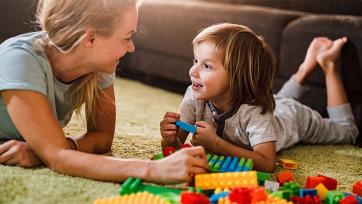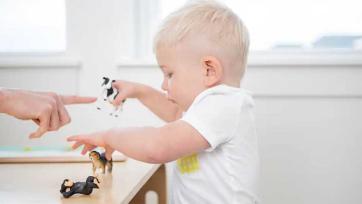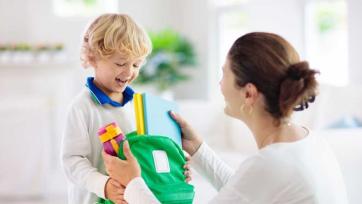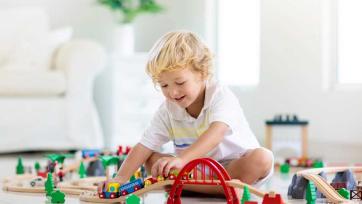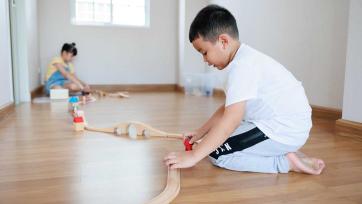Every parent has dreams for their children. Some of these dreams may include their children becoming famous musicians or billionaires. But one thing that every parent hopes for is that their children will be able to succeed in life. Fortunately, acquiring skills is one way that your child can achieve this. And while there's no one perfect way to teach skills, several strategies can be used to help improve your child's skillset. In this blog post, this article will discuss some of the most effective strategies for fostering your child's development and encouraging them to attain their full potential.

Follow Their Interests
Parents can help their children build skills by following their interests. If your kid enjoys playing video games, you may help them pick the genres they like by letting them try out a variety. If your child is interested in music, have them listen to different kinds of music and find musicians they enjoy. When parents follow their children's interests, it helps them learn new things and develop skills they may not have otherwise.
Learn to Ask Questions
Start by asking your kiddos questions if you wish to aid in their skill development. Asking questions lets, you understand what your child is interested in and encourages them to investigate independently. When children learn to ask questions, they become inquisitive and thrive in a curious world. To improve your question-asking skills, consider these suggestions.
1. Be specific. When asking questions, be as detailed as possible. If you want your kid to learn how to paint the inside of a cup, ask them to demonstrate how they painted something similar in the past. This specificity will help them remember the steps and avoid repeating mistakes.
2. Encourage curiosity. When your child asks a question, encourage their interest by responding with open-ended responses instead of giving straight answers yourself. This will help them explore independently and build their confidence when learning new things.
3. Praise their efforts! When your child demonstrates knowledge or skill through questioning, reward them with compliments such as: "That's really smart of you for figuring that out." This will promote positive questioning habits and encourage children to seek out information for themselves instead of relying on others too often.
Practice Role Playing
Role-playing is a great way to help children practice taking turns, following directions, and communicating. Here are some tips for creating successful role plays:
1. Make sure the role play is fun for you and your child. Some fun ideas include making up a story together, acting out a favourite movie scene, or coming up with your game scenarios.
2. Try to involve as many of your child's senses as possible. For example, have them smell something new, feel something cold or hot, see something in 3D, or hear noise from all directions.
3. Model good behaviour before leading your child into role-play. This will help them understand what is expected of them and set the tone for the play proceedings.
4. Be consistent with your role-playing instructions. If you tell your child to say "please" and "thank you," make sure they follow these instructions throughout the play!
Teach Empathy
Teaching empathy is a skill that is essential to building solid relationships. When your child can empathize with others, they are better equipped to understand and support their feelings and those of others. There are many ways to foster empathy in your child, but here are five tips:
1. Model empathy yourself. As the parent or guardian, be aware of how you react to situations and what you say to your child. Show them that you care about their feelings and understand their feelings.
2. Encourage your child to ask questions. Open up discussions about different topics – especially those that affect your child – by encouraging your child to ask questions. This will help them develop a deeper understanding of the situation and other perspectives.
3. Help them practice self-compassion. Show your child that it's okay to feel unhappy, frustrated or overwhelmed sometimes (even in difficult situations). Help them cultivate healthy self-compassion by teaching them how to recognize and cope with negative thoughts and emotions.
4. Whenever possible, speak up for them. Reassure your kid that they can always talk to you about anything that's upsetting them – regardless of how large or minor the issue seems. This will help build trust and ensure safety during tough conversations or situations."
Know Your Child's Limits
Parents continually look for new and innovative methods to help their children learn and grow. While some skills may be innate, many can be enhanced with proper instruction and practice.
It is essential to know your child's limits. This will provide insight into what training is required to get them where you want them to go. If your child cannot do a task correctly, it's best not to force them to try. Tell them they can try again later if they have more time or resources available.
Remember that children learn best when they are interested in what they're doing. If you can find activities that interest your child, they are more likely to engage in the action and learn from it.
Be a Good Role Model
Parents are great role models for their children. What they do and say can have a significant impact on the development of their children. It is important to set good examples for your children and to be present, active, and positive during their early years. Listed below are some suggestions for improvement as a role model:
Be present: Be there when your child is doing something special or getting ready for school. Acknowledge their accomplishments and show interest in what they are doing.
Be active: Play with your child, go on walks, and play together. Show interest in what they are doing and ask questions.
Be positive: Don't criticize your child excessively or use negative language. Encourage them and praise them when they do well.

